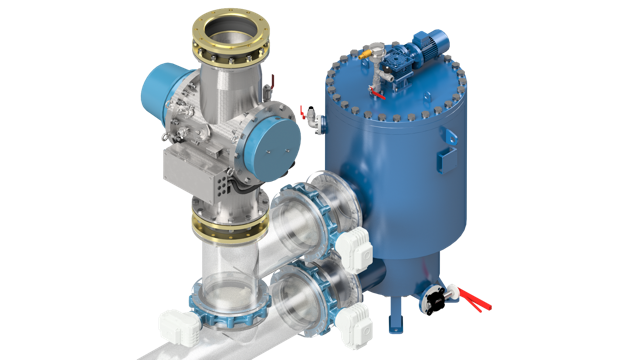Ship owners were given the opportunity this week to question the United States Coast Guard (USCG) on the challenges they face regarding the differing requirements from the International Maritime Organization (IMO) and USCG itself on implementing and complying with the Ballast Water Management (BWM) Convention.
During the UK Chamber of Shipping’s Ballast Water Forum, jointly hosted with Fathom Maritime Intelligence, delegates participated in an international call with members of the USCG including Meridena Kauffman, Incident Management & Preparedness at USCG, Mike Rand and John Sedlak from USCG Office of Commercial Vessel Compliance, and Maria Wiener from the Marine Safety Centre.
One of the questions raised in the room was regarding the 30-day response time to Type Approval applications that the USCG had stated before. Confusion was evident as some believed this meant a 30-day approval, but as Kauffman was able to confirm, this 30-day time period relates to the time in which the Coast Guard will respond to manufacturers, but not actually approve a system. With the complexity of the regulation, each application is around 4,000 pages, which needs to be reviewed, and so it is a timely process that is made up of further examination, laboratory reports and confirmation, Kauffman relayed to the floor.
Another point raised was also that relating to the potential alignment of the USCG regulation with the IMO’s one. As the USCG confirmed, their own regulation will still stand and although they are involved at the IMO level, they are not a party to their Convention and therefore there is currently no intention to change the USCG regulation on BWM to align with the IMO’s.
Of course, the question of when the first USCG Type Approved BWTS will occur was asked. This cannot be determined in advance, was the answer. At the moment there are around 9,300 vessels arriving in U.S. water every year, making one or more visits to the U.S. Kauffman revealed, so it is important that a BWTS is approved to the Coast Guard’s standards, but knowing when this will happen is difficult. At the moment there are a number of ongoing discussions with laboratories, and “it is likely that it will be soon, but we can’t pinpoint exactly when soon is”, stated Kauffman.
In terms of non-compliant or faulty BWTS, the USCG urged ship owners to ensure that they get in touch with the Coast Guard at the earliest opportunity when voyaging and planning to enter U.S. waters in order to let them know why the ship or system is not in compliance. The USCG will then make a decision as to what to do on a case-by-case basis, but “the earlier you get in touch, the more likely chance we have to review the case”, they specified.
Kaufmann also revealed that in early 2017 the USCG will reveal a navigation circular that will provide more information on the USCG regulation and its future plans.
Ship Efficiency Review News
To contact the reporter responsible for this article, please email editor@fathom-mi.com

































